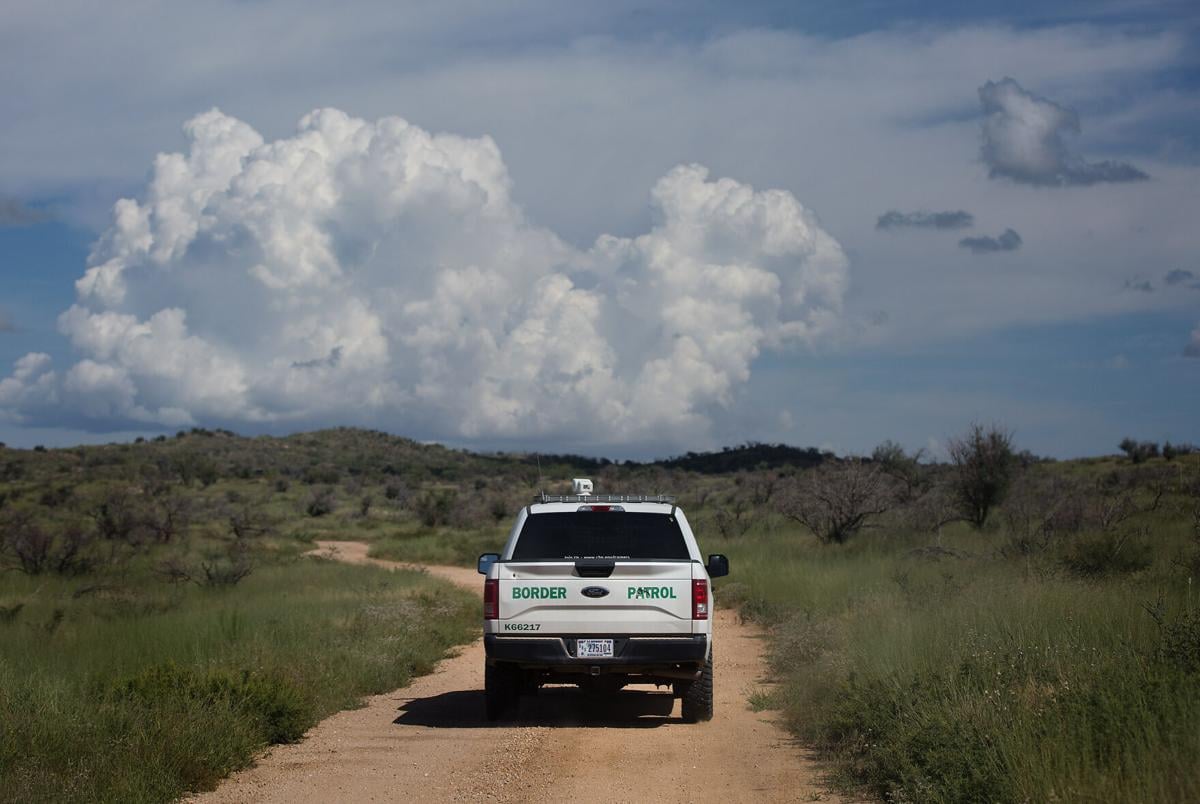The family of a man shot and killed by a Border Patrol agent says they had no prior knowledge footage of his death was going to be released and they believe they should have been asked for consent.
Customs and Border Protection released body-camera footage on April 12 of an agent shooting 38-year-old U.S. citizen Noe Mejia on March 14 after a pursuit. Mejia failed to yield to Border Patrol agents when they tried to pull him over near Sasabe, Arizona, suspecting him of smuggling humans.
A letter sent to media by attorney Joy Bertrand says Mejia’s family found out about the release of the footage on April 13 without receiving notice from border officials.
“At no time did CBP give notice to the family that this footage was being released to the media,” the letter says. “At no time did CBP seek or receive the consent of our clients to release this footage to the media. The family is horrified and re-traumatized by the release of this footage that shows in graphic detail a CBP officer shooting their loved one.”
Bill Risner, a Tucson attorney who has represented numerous people hurt or killed in Border Patrol incidents in Arizona, says CBP releasing footage of a deadly use-of-force incident is new and a step in the right direction.
In the cases he’s handled, if there was video footage, the agency blocked its public release, Risner said.
“It’s a good thing in general for government agencies to release videos they have of specific use-of-force incidents where they shoot somebody,” he said. “It’s highly critical. Most other law enforcement agencies have rules that they should do that.”
“If they’re changing policy, it is definitely a step in the right direction,” he said.
Bertrand and her co-council represent several people in Mejia’s family, including Miguel Gutierrez, Marcellino Jardin and two minor children. Bertrand did not specify how they were related or the ages of the children. The family is investigating the shooting and intends to pursue any legal remedies, the letter says.
Legal remedies could include a wrongful death lawsuit or a suit based on the Fourth Amendment, which says people have a constitutional right to be free from excessive force by law enforcement officials, Bertrand said in an interview.
“Right now, we’re kind of waiting to see what happens with the criminal investigation,” she said. “We certainly wouldn’t want to do anything to jeopardize a criminal matter.”
The shooting is under investigation by the Pima County Sheriff’s Department and CBP’s Office of Professional Responsibility.
The agent, whose name was not released, was put on administrative leave after the incident, which is standard practice following use of deadly force.
CBP would not say whether the agent was still on administrative leave and declined to comment on the family being unhappy about the way the video was released.
‘Commitment to accountability’
CBP is piloting a body-worn camera program for officers and agents throughout the country. It said earlier in a written statement that the agency is committed to quickly releasing body-worn camera footage, consistent with an executive order enacted last May that requires federal law enforcement agencies to publicly post body-worn camera policies.
“The prompt public release of this footage is in keeping with our commitment to accountability and transparency,” Acting Commissioner Troy Miller said at the time of the video release. “This includes our ongoing work to deploy body-worn camera systems to all frontline personnel, with the exception of those who work in areas already covered by other camera systems, such as processing facilities, ports of entry or aboard aircraft.”
Miller also said then, “The loss of a life during a CBP law enforcement encounter profoundly impacts everyone involved, the family of the deceased, the officers and agents on the scene, the greater CBP workforce and the communities we serve.”
The incident began when Mejia, suspected of human smuggling, failed to yield to Border Patrol agents, who then chased the vehicle.
Started turning steering wheel
An agent caught up to the vehicle. He walked over to it, broke both driver-side windows with his baton and grabbed Mejia’s forearm. Mejia changed gears and started turning the steering wheel, and the agent shot him once.
Mejia died of a gunshot wound to the neck, according to an autopsy report. A toxicology report showed Mejia had methamphetamine in his system and a blood alcohol concentration at higher than legal limits for driving.
There was another U.S. citizen in the front passenger seat, two undocumented migrants were in the back seat and three undocumented migrants were in the trunk.
The number of use-of-force incidents in the Border Patrol’s Tucson Sector has been the highest in the nation since fiscal year 2021, Customs and Border Protection data show. Officials say those numbers should be considered in relation to the number of assaults on agents and the demographics of people being apprehended.
The Tucson Sector also had the highest number of force incidents involving a firearm from the beginning of fiscal year 2020 through February of this year.
Human smuggling and related high-speed pursuits have greatly increased in Southern Arizona in recent years.
WARNING: Graphic content. Customs and Border Protection released body camera footage of a deadly use-of-force incident that happened on March 14 close to the port of entry in Sasabe, Arizona, which is the first time the agency has released body camera footage. See the full video at tucne.ws/1n34





